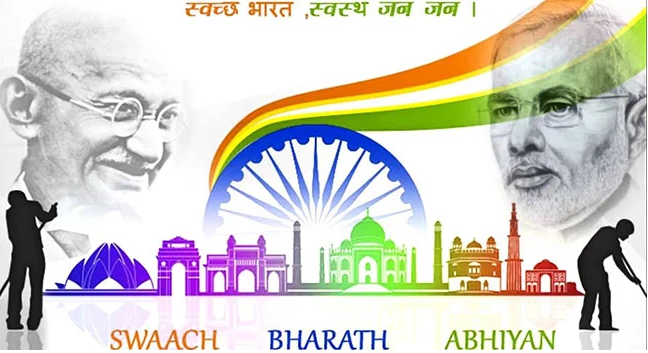Sanitation is a fundamental public health intervention. Sanitation reduces the risk of water-borne diseases such as diarrhea, cholera, typhoid, hepatitis, worm infestations, malabsorption, and as also, malnutrition. A World Health Organization (WHO) study in 2012 estimated that for every US$ invested in sanitation, there was a return of US$ 5.5 in lower health costs, more productivity and fewer premature deaths.
Sanitation in India has a deep-rooted history, tracing back to the Indus valley civilization where scientific methods for toilet construction and waste management were practiced. Our scriptures say, “In a pure body, lies a pure mind, and in a pure mind lies true knowledge”.
Despite this rich legacy, India’s journey towards comprehensive sanitation coverage has been fraught with challenges. By the time of the 1981 census, a mere 1% of rural households had access to toilets. This paved the way for the launch of sanitation programmes by government of India – the Central Rural Sanitation Programme, the Total Sanitation Campaign, and the Nirmal Bharat Abhiyan. These initiatives pushed the rural sanitation coverage to 39%.
India accounted for almost 60% of the world’s open defecation load with over 50 crore people practicingopen defecation. Our women were caught between attending to basic needs in darkness, and maintaining their dignity and safety.
It was in this backdrop that the Prime Minister Shri Narendra Modi launched the Swachh Bharat Mission (SBM) in2014 with the goal to make rural India Open Defecation Free (ODF) in five years. Bharat achieved this milestone on 2nd October 2019, the 150th birth anniversary of Mahatma Gandhi.In five momentous years, the rural sanitation coverage rose to 100%.
Under the mission, more than 11.7 crore toilets have been constructed since 2014 with a public investment of over 1.4 lakh crore. This was not merely an asset creation exercise; it was a nationwide movement that galvanized over a billion people, blending infrastructure development with robust behavioral change revolution. The hall mark was people’s movement (‘janandolan’) and perhaps the world’s biggest behavior change exercise. Children, women, men, community leaders, civil society and government machinery worked in unison.Messages on sanitation reached people through every channel. Celebrities joined the chorus. Village-level volunteers (‘swachhagrahis’) became the champions of change on the ground. Prime Minister led and inspired the nation through his speeches, meetings, Mann-ki-Baat conversations and role model acts of cleaning places and premises.
Following the success of the SBM Phase I, Phase II was launched. This phase aims to sustain the ODF achievements while addressing the broader aspects of solid and liquid waste management, visual cleanliness, and overall rural sanitation. By 2024-25, the goal is to transform all villages into ODF Plus Model, characterized by sustainable practices and enhanced cleanliness. The mission’s next goal is Sampoorna Swachhata—complete cleanliness—that will require continued dedication from every citizen, community, and institution in India.
A recent study published in the top internationaljournal ‘Nature’ underscores the profound impact of SBM on public health, particularly in reducing infant mortality rates. The study, titled, ‘Toilet construction under Swachh Bharat Mission and infant mortality’, analyzed data from 35 Indian states and 640 districts over a 10 year time frame (2011-20) on trends in infantmortality rate (IMR) and under-5 mortality rates (U5MR). The authors document a strong association between increasing toilet access and declining child mortality.
Results from the study imply that for every 10 percentage point increase in district level access to toilets following SBM corresponded to a reduction in district level IMR by 0.9 points and U5MR by 1.1 points on the average. There is further evidence of a threshold effect wherein the district level toilet coverage of 30% (and above) corresponded to a reduction of 5.3 points in the IMR and 6.8 points in the U5MR per thousand live births.The authors estimate that toilet access at-scale due to SBM contributed toward averting 60,000 – 70,000 infant deaths annually.
However, it must be pointed out that this is not the only impact study which sheds light on the transformative role played by SBM. According to WHO (2018), SBM averted over 300,000 diarrheal deaths between 2014 and 2019. The Bill & Melinda Gates Foundation (2017) reported that there were 37%lower cases of wasting among children in ODF areas compared to non-ODF villages, validatinghow sanitation positively impacts childhood nutrition. The incidence of diarrhea in children was lower by almost one third in the ODF villages. In a study in 2017, UNICEF estimated that 93% of women felt safer after having a toilet at home, reflecting the role of SBM in enhancing the safety and dignity of women. Additionally, economic analyses in the study showed that each household in ODF villages saved approximately INR 50,000 annually on reduced healthcare costs plus economic value of saved lives and time savings.
Given the link between sanitation and health, public health gains from SBM are inevitable. What we have from the recent study is a robust quantification of child survival improvements attributable to toilet access. Sanitation transformation on a national scale will surely have impact in reducing water-borne infections among adults as well, as also possibly on reducing the burden of antimicrobial resistance. Sustained effects on childhood stunting and development are also assumed. ICMR and academia should undertake objective studies on these dimensions of SBM.
The Swachh Bharat Mission is an exemplar of what can be achieved through dedication, collaboration, planning, brilliant execution, and relentless janandolan. The 4P mantra of SBM—political will, public finance, partnerships, and public participation—along with persuasion, has been instrumental in the program’s success and outreach. This ‘strategy package’ is a template for other social transformation missions in the country and beyond.
As we strive toward a Viksit Bharat @ 2047, we need to emerge as global leaders in sanitation and cleanliness. The commitment to sustaining behavioral change, ensuring continued use of the constructed toilets and integrating advanced waste management solutions should remain unwavering. Cleanliness must become a shared value, one that is owned and practiced by us all.
The mission celebrates its 10th anniversary next month on the Gandhi Jayanti. A decade of SBM has yielded unprecedented gains – clean environment, women’s dignity and safety, ease of living, household savings and a culture of hygiene aligned with our tradition. Now we also see a robust evidence of SBM on improving public health and in saving lives.
Success of this noble mission is indeed a matter of pride for every Indian.
(The Author is a Member of NITI Aayog. Views are personal. Courtesy: PIB)








